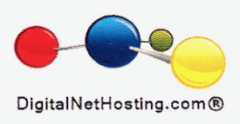ZuluSocial Review: The AI-Powered Social Media
Platform That Creates and Publishes Content for You
What Is ZuluSocial?
ZuluSocial is an AI-powered social media platform that combines content creation and content distribution into a single workflow. Unlike traditional social media management tools that only handle scheduling and analytics, ZuluSocial enables users to generate original images and videos using artificial intelligence, then publish that content directly to Instagram, TikTok, and YouTube—all from one dashboard.
The platform is designed for content creators, social media managers, small businesses, and agencies who want to streamline their content production process without switching between multiple applications.
How ZuluSocial Differs from Traditional Social Media Tools
Most social media management platforms assume you already have content ready to post. Tools like Hootsuite, Buffer, and Sprout Social excel at scheduling, analytics, and engagement—but they require users to create content elsewhere using separate design tools, video editors, and stock asset libraries.
ZuluSocial takes a different approach by integrating AI content generation directly into the platform. Users can:
- Generate images from text descriptions using Google Gemini AI
- Create videos from static images using Kling AI
- Produce lip-sync talking-head videos from a single photo
- Add licensed music to video content
- Publish directly to multiple social platforms
This end-to-end workflow eliminates the need to juggle Canva, CapCut, stock photo subscriptions, and a separate scheduling tool.
ZuluSocial Core Features
Image Studio
ZuluSocial’s Image Studio uses Google Gemini AI to generate images from text prompts. Users describe what they want—whether it’s a product shot, lifestyle image, or graphic—and the AI produces high-resolution visuals optimized for social media.
Key capabilities include:
- Text-to-image generation with natural language prompts
- Multiple aspect ratios for different platforms (square, portrait, landscape)
- Batch generation to create multiple variations
- High-resolution exports up to 4K
- Style consistency for brand aesthetics
Image Studio is particularly useful for creators who need fresh visuals regularly but lack design skills or photography resources.
Video Studio
Video Studio transforms static images into motion content using AI video generation technology powered by Kling AI. This feature addresses one of the biggest challenges for social media creators: producing enough video content to satisfy algorithm preferences on TikTok, Instagram Reels, and YouTube Shorts.
Video Studio capabilities:
- Image-to-video transformation with AI motion effects
- Lip sync video generation from a single photo
- Multiple video lengths and format options
- Vertical, square, and landscape outputs
- Direct integration with the publishing workflow
The lip sync feature is notable because it allows users to create talking-head videos without filming. Users upload a photo, provide audio or text, and the AI generates realistic lip movements synchronized to the audio.
Music Studio
Music Studio provides access to a library of professionally licensed music tracks that are pre-cleared for use on social media platforms. This solves the common problem of content being muted or taken down due to copyright claims.
Music Studio features:
- Curated library of licensed tracks
- Search by mood, genre, tempo, and duration
- Preview before adding to projects
- Pre-cleared for Instagram, TikTok, and YouTube
- Integration with Video Studio
Having licensed music built into the platform means creators don’t need separate subscriptions to music licensing services.
Multi-Platform Publisher
The Publisher feature handles content distribution to Instagram, TikTok, and YouTube. Users can publish immediately or schedule posts for optimal times.
Publisher capabilities:
- Direct publishing to Instagram (Feed, Reels, Stories, Carousels)
- Direct publishing to TikTok
- Direct publishing to YouTube (Videos and Shorts)
- Visual content calendar
- Scheduled posting with optimal time suggestions
- Draft management and post previews
- Bulk scheduling for content batching
The Publisher integrates directly with the AI creation tools, so users can generate content and schedule it for distribution in a continuous workflow.
Instagram Suite
For users who need deeper Instagram management capabilities, the Instagram Suite provides analytics, inbox management, and engagement tools.
Instagram Suite includes:
- Performance analytics and insights
- Follower growth tracking
- Unified inbox for DMs and comments
- Comment management and moderation
- Hashtag performance analysis
- Best time to post recommendations
- Content performance rankings
This feature set competes directly with dedicated Instagram management tools while being integrated into the broader content creation workflow.
Team Collaboration
ZuluSocial supports multi-user access with role-based permissions, making it suitable for teams and agencies.
Team features:
- Role-based access (Admin, Manager, Creator, Viewer)
- Content approval workflows
- Draft-to-publish pipeline with review stages
- Shared content calendar
- Activity logs for accountability
- Client workspace organization for agencies
ZuluSocial Pricing Structure
ZuluSocial uses a subscription model with four tiers, each including a monthly allocation of AI credits for content generation.
How AI Credits Work
ZuluSocial uses a credit system for AI-generated content:
- Image generation: 1 credit per image
- Video generation: 4 credits per video
- Lip sync video: 4 credits per video
Credits reset monthly and do not roll over. Users who need additional credits can purchase top-up packs.
Subscription Tiers
Starter — $39/month
- 25 AI credits
- 1 Instagram, 1 TikTok, 1 YouTube account
- 50 scheduled posts per month
- Basic analytics
- 1 team seat
Professional — $89/month
- 65 AI credits
- 3 accounts per platform
- 150 scheduled posts per month
- Advanced analytics
- Content calendar
- 3 team seats
Business — $189/month
- 140 AI credits
- 5 accounts per platform
- 500 scheduled posts per month
- Custom reporting
- Approval workflows
- 5 team seats
Agency — $349/month
- 250 AI credits
- 10 client accounts per platform
- Unlimited scheduled posts
- Priority onboarding
- Early access to new features
- Quarterly strategy calls
- Dedicated account manager
- Unlimited team seats
Credit Top-Up Packs
For users who exceed their monthly credit allocation:
PackCreditsPriceCredit Pack - 5050$34.99Credit Pack - 100100$64.99Credit Pack - 250250$149.99
Free Trial
ZuluSocial offers a 7-day free trial that includes:
- 10 AI credits
- 1 account per platform
- 10 scheduled posts
- Full feature access
Who Should Use ZuluSocial?
ZuluSocial is designed for users who want to consolidate their content creation and distribution workflow. It’s particularly well-suited for:
Content Creators and Influencers Creators who post frequently across multiple platforms can use ZuluSocial to generate fresh content quickly and maintain a consistent posting schedule without spending hours on production.
Small Business Owners Business owners who manage their own social media but lack design or video editing skills can use the AI tools to produce professional-looking content without hiring a designer or learning complex software.
Social Media Managers Managers handling multiple client accounts can use the team features and multi-account support to organize workflows and maintain approval processes.
Marketing Agencies Agencies can use the Agency plan to manage multiple clients with dedicated workspaces, while using AI generation to scale content production.
ZuluSocial vs. Competitors
ZuluSocial vs. Hootsuite and Sprout Social
Traditional social media management platforms focus on scheduling, analytics, and engagement. They assume content already exists. ZuluSocial adds AI content creation to the workflow, making it a more complete solution for users who need to produce content as well as distribute it.
ZuluSocial vs. Artlist
Artlist provides AI content generation tools and a library of licensed creative assets, but it’s primarily a creation platform. Users still need to download their content and upload it to social platforms manually. ZuluSocial integrates publishing directly, eliminating that extra step.
ZuluSocial vs. Canva Plus Scheduling Tool
Many creators use Canva for design, a separate video tool, and a scheduling platform. This workflow requires switching between applications and manually moving files. ZuluSocial consolidates these functions into one platform with a unified workflow.
Technical Integrations
ZuluSocial connects directly to social platform APIs for publishing:
- Instagram: Via Meta’s Graph API for Feed posts, Reels, Stories, and Carousels
- TikTok: Via TikTok’s Content Posting API for direct video uploads
- YouTube: Via YouTube Data API for Videos and Shorts
For AI capabilities:
- Image Generation: Google Gemini AI
- Video Generation: Kling AI
- Lip Sync: Kling AI
Getting Started with ZuluSocial
New users can start with the 7-day free trial at zulusocial.com. The onboarding process involves:
- Creating an account
- Connecting social media profiles (Instagram, TikTok, YouTube)
- Exploring the AI creation tools (Image Studio, Video Studio)
- Creating and scheduling first posts via Publisher
The platform includes a getting started guide that walks users through connecting accounts, creating content, and publishing.
Conclusion
ZuluSocial represents a new category of social media tool that combines AI content generation with multi-platform publishing. By integrating image generation, video creation, lip sync technology, licensed music, and direct publishing into a single platform, it addresses the fragmented workflow that many creators and businesses currently experience.
For users who spend significant time switching between design tools, video editors, music libraries, and scheduling platforms, ZuluSocial offers a consolidated alternative. The credit-based pricing model for AI features provides flexibility, while the tiered subscriptions scale from individual creators to agencies managing multiple clients.
Learn more and start a free trial at ZuluSocial.com
Frequently Asked Questions About ZuluSocial
What is ZuluSocial? ZuluSocial is an AI-powered social media platform that combines content creation (AI images, AI videos, lip sync) with multi-platform publishing to Instagram, TikTok, and YouTube.
How does ZuluSocial’s AI image generation work? ZuluSocial uses Google Gemini AI to generate images from text descriptions. Users type what they want, and the AI produces high-resolution images optimized for social media.
Can ZuluSocial create videos from photos? Yes. Video Studio uses Kling AI to transform static images into motion videos. It also offers lip sync technology that creates talking-head videos from a single photo.
Which social media platforms does ZuluSocial support? ZuluSocial currently supports direct publishing to Instagram (Feed, Reels, Stories, Carousels), TikTok, and YouTube (Videos and Shorts).
How much does ZuluSocial cost? ZuluSocial offers four plans: Starter ($39/month), Professional ($89/month), Business ($189/month), and Agency ($349/month). A 7-day free trial is available.
What are AI credits in ZuluSocial? AI credits are used for content generation. Image generation costs 1 credit, while video and lip sync generation cost 4 credits each. Monthly credits are included with each subscription plan.
Does ZuluSocial offer a free trial? Yes. ZuluSocial offers a 7-day free trial with 10 AI credits, 1 account per platform, and full feature access.
Is the music in ZuluSocial licensed for commercial use? Yes. Music Studio provides tracks that are pre-cleared for use on Instagram, TikTok, and YouTube, avoiding copyright strikes.
Can teams use ZuluSocial? Yes. ZuluSocial supports team collaboration with role-based permissions, approval workflows, and shared content calendars. Team seats vary by plan.
How is ZuluSocial different from Hootsuite or Buffer? Unlike traditional scheduling tools, ZuluSocial includes AI content creation capabilities. Users can generate images and videos within the platform, then publish directly—eliminating the need for separate design and editing tools.










